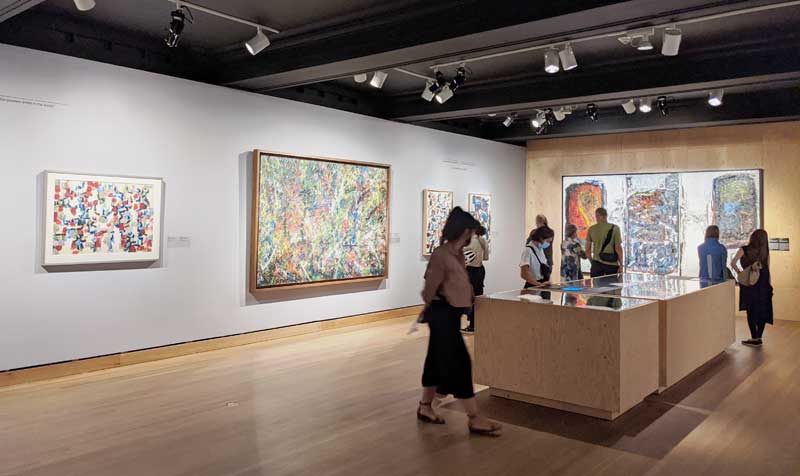
Newcomers to collecting NFT art are often advised to collect what they love.
The logic is that if the Eth or dollar value of your collection falls to zero, you still have the art.
Good advice, although privately none of us really want to imagine the value of our collections going anywhere but up.
Anyway… during the first few weeks I was simply buying pieces I liked.
Then, after immersing myself in the ArtBlocks Discord channels, and spending way too much time on Twitter, I slowly began to get a deeper sense of the generative art scene.
I started to be a little more deliberate in what I was buying. There were certain artists I wanted included in my collection. And I was beginning to feel a sense of history in the making. So I wanted some of the earlier curated pieces from ArtBlocks.
Some of those earlier pieces were beyond my reach financially, and probably always will be. But I did what I could.
And then, one day, I thought it might be nice to hang my collection on a virtual “wall”.
So I went to Oncyber.io and created a gallery, showing the art I had collected.
Ouch.
Without curation, random art on a wall can look like a mess.
There I was, Mr. FancyPants, building a collection of generative art from incredible artists.
But I had NO clue how to curate that collection.
Truth be told, I had never even thought about the skill that goes into art curation.
It’s not just about hanging the pieces you own in some random order. (That’s what I did, and my gallery is still a work in progress.)
It’s about choosing and arranging pieces in a way that makes them all look good.
I’m still at the very early stages of learning about this, but there are some amazing professionals out there you can learn from.
People like Maylin Pérez, who is a true professional, and has been generous enough to say a few kind things about my somewhat messy collection.
And curation isn’t just about selecting the most expensive pieces.
When I look at the some of the most notable collectors of generative art, I see a mix in their galleries. A mixture of high-end pieces, side by side with some very affordable pieces.
The less expensive pieces provide a kind of supporting frame for the hero piece. And that hero piece, in turn, reflects additional value on the affordable pieces.
I probably didn’t explain that very well, but you can get a sense of what I mean by browsing through these two collections.
Both are exceptional, and take me to a place of awe, tinged with little jealousy.
My education as a curator begins…
I’m still looking for ways to add additional iconic pieces to my collection, even with a very limited budget.
But I’m also looking to buy some of those more affordable “companion” pieces, some of which are fine pieces of art in their own right.
It’s time to improve both my collection, and the way it’s curated.
I’m loving this learning process!